プロジェクトProjects
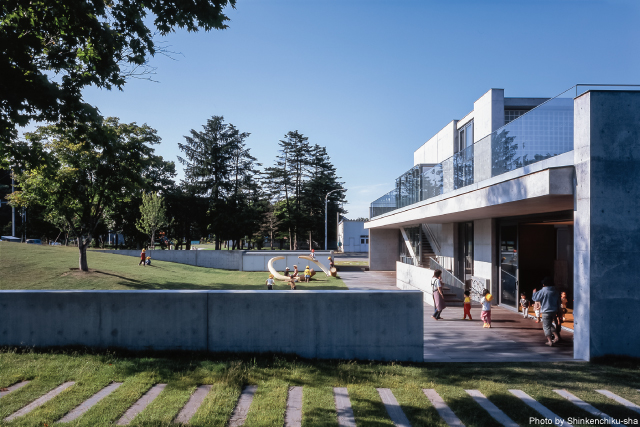
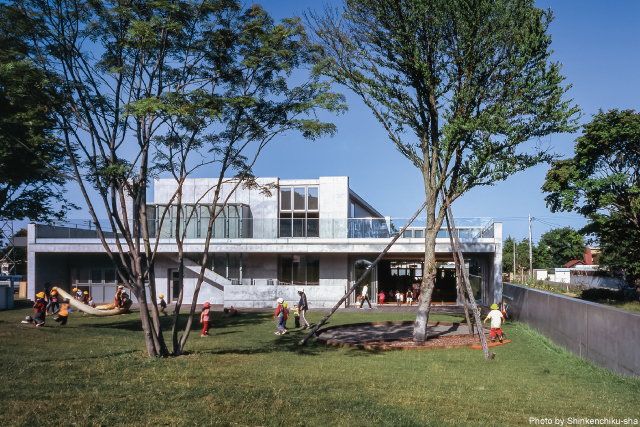
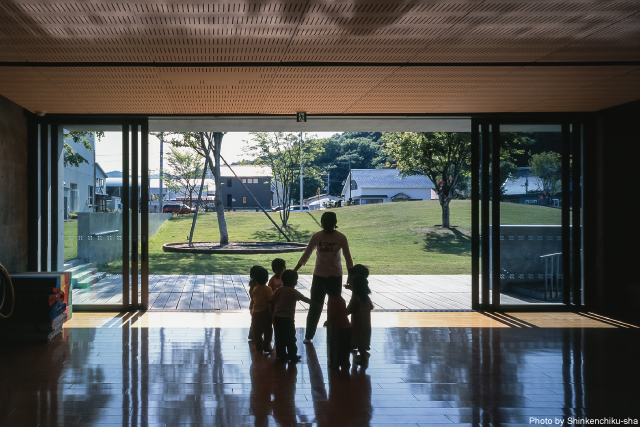
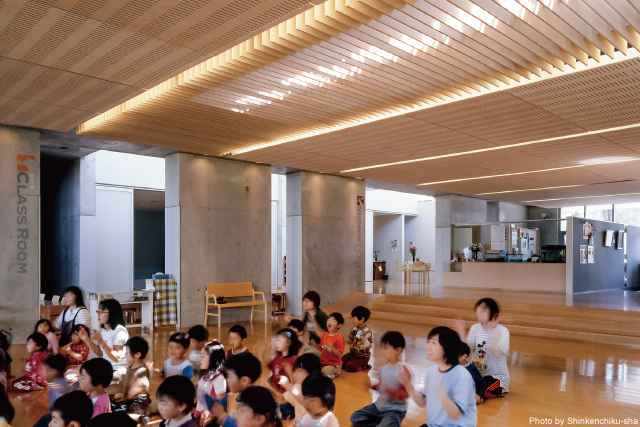
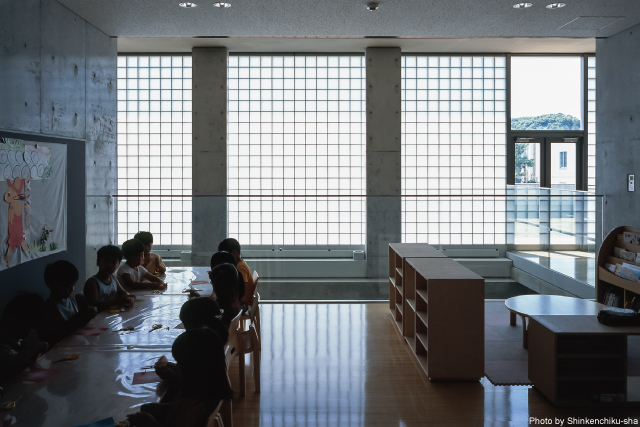
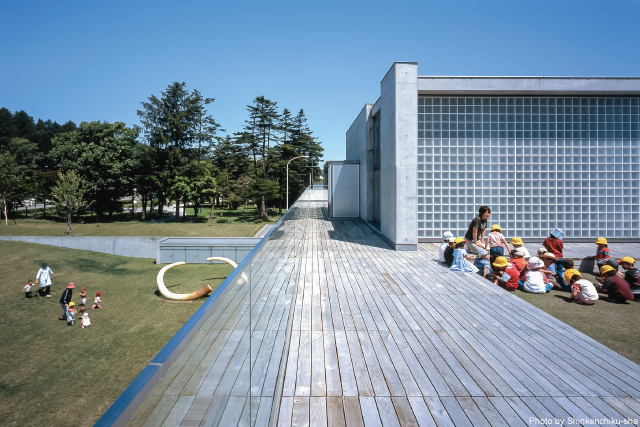
由仁保育園
2003
北海道夕張郡由仁町
構 造:鉄筋コンクリート造
階 数:地上2階
延床面積:868㎡
七田構造デザイン( 構造設計 )
アトリエブンク + アイユーエンジニアリング+ニシブエンジニアリング( 設備設計 )
まちの市街地に位置する町営の保育園である。緑豊かな園庭と内部空間をどのように関係づけるかが重要なテーマであった。
子どもたちの集団活動の場である遊戯室は園庭に面して1階に配置した。周辺より1m程度掘り下げられ窪地状の大地から築山へとなだらかにつながる園庭と連続させることで、一体化した活動を可能にした。一方、子ども個人の活動が主である保育室は2階に配置し、南北方向に開放されたガラスブロック面で覆った。均質な拡散光で満たされた安定した光環境の中でグループ単位の様々な活動に対応できるように、可動家具による自由なレイアウトが可能な設えとなっている。また保育室には園庭を見下ろすことのできる屋上庭園を確保した。このように異なる2つの居場所である遊戯室と保育室は、食堂として利用される吹抜けによって緩やかに連続する。
内部空間は開放方向を違える門型フレームの組合せによって構成した。採用された薄肉ラーメン構造(中空スラブ)は、安定した温熱環境を実現する装置としての役割も併せ持っている。中空のスラブ内は暖気を通した蓄熱体として利用され、夏季・中間季においては夜間冷気を通した躯体蓄冷が行われる。この輻射冷熱を効率的に行うために、断熱材を挟む打放しのコンクリート躯体を露出させた。併せて吹抜けを介した高低差のある空間を利用した自然換気によって、快適な室内環境を目指した。
北海道赤レンガ建築奨励賞
新建築2003年10月号
Yuni Nursery School
2003
Yuni-cho, Hokkaido
Structure:RC
Floor:2 floors
Floor Area:868㎡
Shichida Structural Design( Structural Design )
Atelier BNK+IU Engineering+Nishibu Engineering( Mechanical & Electrical Engineering )
This is a municipal nursery school located in a town area. An important question during the design phase was how to establish a connection between the leafy schoolyard and the interior space.
Our design positions the playroom where the children gather for group activities on the first floor facing the schoolyard. This allows integrated activities through continuity with the schoolyard, which rises gradually from a one-meter depression up to an artificial hill. Meanwhile, the nursery room intended primarily for individual activities is located on the second floor, and the open sides facing north and south are glazed with glass blocks. In this stable light environment filled with homogeneous diffuse light, the layout of the nursery room can be adjusted freely using movable furniture, allowing the room to accommodate a variety of activities in group units. Our design also secures space for a rooftop garden overlooking the schoolyard. These two different places — the playroom and the nursery room — are brought loosely together by an atrium that serves as a dining area.
The interior space was composed by combining portal frames in various directions. The thin rigid-frame structure (voided slab) also serves as a device for achieving a stable thermal environment. The voided slabs are used as a heat reservoir through which warm air is passed, and in the summer and intermediate seasons, coolness is stored in the frame through the passage of cool, night time air. To allow this radiant cooling to happen efficiently inside the building, the unfaced concrete frames have heat insulating material in between and are left exposed. Our design also aimed to create a pleasant indoor environment through natural ventilation utilizing the difference in height introduced by the atrium.
Hokkaido Red Brick Architecture Award
Shinkenchiku Oct. 2003

